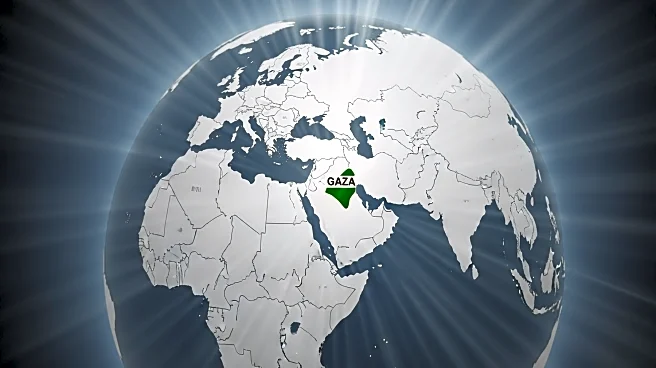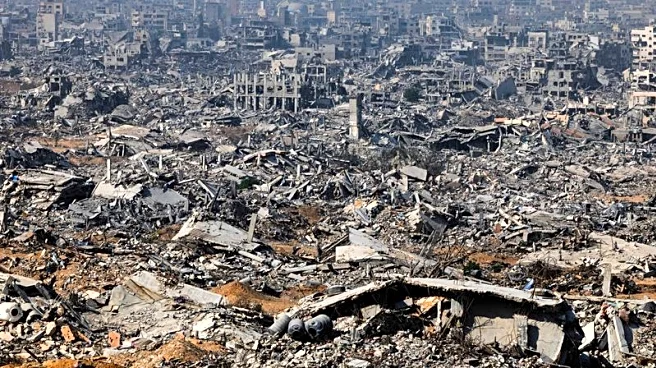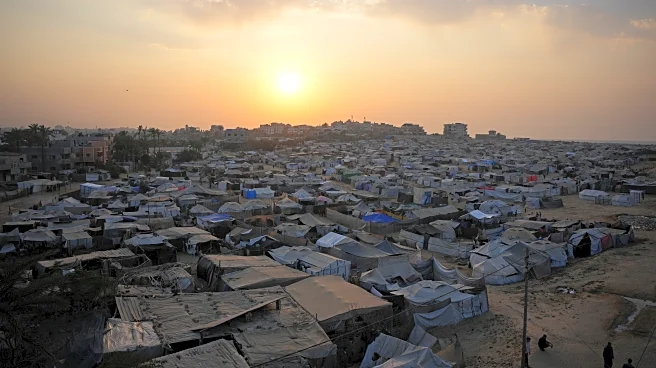What's Happening?
The U.S. command center in Kiryat Gat has assumed control of coordinating humanitarian aid deliveries to Gaza, a role previously held by Israel's COGAT unit. This shift makes Israel a secondary player
in determining the type and amount of aid allowed into Gaza. The command center, which includes representatives from 40 countries and organizations, aims to streamline aid efforts. However, the center's operations have been described as chaotic, with bureaucratic delays and uncertainty. President Trump's plan for Gaza calls for increased humanitarian aid, but implementation details remain unclear.
Why It's Important?
The U.S. takeover of aid coordination in Gaza marks a significant shift in the region's power dynamics, potentially altering the course of humanitarian efforts. This move could lead to increased international involvement in Gaza's reconstruction, impacting U.S.-Israel relations and regional politics. The change in leadership may also affect the efficiency and effectiveness of aid delivery, as the command center faces challenges in decision-making and funding. The situation underscores the complexities of international aid coordination in conflict zones and the need for clear strategies to address humanitarian needs.
What's Next?
The U.S. command center must address bureaucratic challenges and secure funding to implement aid plans effectively. The international community may push for clarity on aid restrictions and the expansion of humanitarian efforts in Gaza. The situation could lead to diplomatic negotiations to ensure compliance with ceasefire agreements and address the ongoing humanitarian crisis. Additionally, the proposed plan to create 'safe communities' in Gaza may face scrutiny and require further development.
Beyond the Headlines
The shift in aid coordination raises questions about the role of international organizations in conflict zones and the balance of power between nations. The situation may lead to long-term changes in how humanitarian aid is managed and delivered in regions affected by conflict. The involvement of multiple countries and organizations highlights the global nature of humanitarian efforts and the need for collaboration to address complex challenges.













